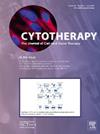3D打印的突破:海藻酸盐- decm生物链中的功能性人体胰岛
IF 3.2
3区 医学
Q2 BIOTECHNOLOGY & APPLIED MICROBIOLOGY
引用次数: 0
摘要
背景,生物打印人类胰岛(HI)用于治疗1型糖尿病(T1D)的β细胞替代疗法具有巨大的潜力,但由于剪切诱导的HI损伤、功能降低和HI聚集而面临挑战。先前的研究主要集中在动物源性胰岛上,针对hi特异性生物链接优化和生物打印参数的研究有限。本研究旨在开发一种可扩展的HI生物打印方法,以保持胰岛的活力、功能和结构完整性,用于临床应用。方法采用海藻酸盐为基础的生物打印液,辅以去细胞化的人胰腺细胞外基质(dECM)。生物墨水的流变行为,剪切减薄性能和机械稳定性进行了优化。结构体用基于挤压的生物打印机打印,使用优化的参数来最小化HI剪切应力。通过活/死试验、葡萄糖刺激胰岛素分泌(GSIS)和培养21天的免疫染色来评估细胞的活力和功能。结构完整性评估了结构孔径和机械稳定性,而高密度生物打印(10,000 iEQ/mL)解决了可扩展性挑战。结果优化后的生物打印参数可使细胞存活率达到90%以上(2500 iEQ/mL, N=3个供体),7 d内刺激指数(SI)稳定,与游离胰岛相当。高密度打印显示了体积组织制造的潜力。与游离胰岛相比,打印条件在第21天产生了超过90%的活力和显著更高的SI(3.7±0.6 vs. 2.6±0.4)。在胰高血糖素-胰岛素共表达细胞明显缺失的情况下,富含decm的构建体显示出长期的HI活力。本研究通过优化生物墨水配方和打印参数,提高了HI的活性、功能和结构稳定性,建立了用于T1D治疗的HI生物打印平台。功能性高密度HI结构也被成功打印,为治疗应用铺平了道路。该策略可以满足不同群体开发临床相关β细胞替代疗法的输送系统要求。本文章由计算机程序翻译,如有差异,请以英文原文为准。
Breakthroughs in 3D printing: functional human islets in an alginate-dECM bioink
Background & Aim
Bioprinting human islets (HI) for beta-cell replacement therapy for treating type 1 diabetes (T1D) holds immense potential but faces challenges due to shear-induced HI damage, reduced functionality, and HI aggregation. Previous studies have mainly focused on animal-derived islets, with limited research addressing HI-specific bioink optimization and bioprinting parameters. This study aims to develop a scalable HI bioprinting methodology that preserves islet viability, functionality, and construct structural integrity for clinical applications.
Methodology
HI were bioprinted in clinically applicable alginate-based bioinks, supplemented with decellularized human pancreatic extracellular matrix (dECM). Bioinks were optimized for rheological behavior, shear-thinning properties, and mechanical stability. Constructs were printed with an extrusion-based bioprinter using optimized parameters to minimize HI shear stress. Viability and functionality were assessed via live/dead assays, glucose-stimulated insulin secretion (GSIS), and immunostaining over 21 days in culture. Construct pore size and mechanical stability were evaluated for structural integrity, while high-density bioprinting (10,000 iEQ/mL) addressed scalability challenges.
Results
The optimized bioprinting parameters resulted in over 90% viability of HI (2,500 iEQ/mL, N=3 donors), with stable stimulus index (SI) comparable to free islets over 7 days. High-density printing demonstrated the potential for volumetric tissue manufacturing. The printing conditions resulted in over 90% viability and a significantly higher SI on day 21 compared to free islets (3.7 ± 0.6 vs. 2.6 ± 0.4). dECM-enriched constructs demonstrated long-term HI viability, with a significant absence of glucagon-insulin co-expressing cells.
Conclusion
This study has established a HI bioprinting platform for T1D therapy, by optimizing bioink formulations and printing parameters that resulted in enhanced HI viability, functionality, and construct structural stability. Functional high-density HI constructs were also successfully printed, paving the way for therapeutic applications. This strategy could address the delivery system requirements of various groups developing clinically relevant beta-cell replacement therapies.
求助全文
通过发布文献求助,成功后即可免费获取论文全文。
去求助
来源期刊

Cytotherapy
医学-生物工程与应用微生物
CiteScore
6.30
自引率
4.40%
发文量
683
审稿时长
49 days
期刊介绍:
The journal brings readers the latest developments in the fast moving field of cellular therapy in man. This includes cell therapy for cancer, immune disorders, inherited diseases, tissue repair and regenerative medicine. The journal covers the science, translational development and treatment with variety of cell types including hematopoietic stem cells, immune cells (dendritic cells, NK, cells, T cells, antigen presenting cells) mesenchymal stromal cells, adipose cells, nerve, muscle, vascular and endothelial cells, and induced pluripotential stem cells. We also welcome manuscripts on subcellular derivatives such as exosomes. A specific focus is on translational research that brings cell therapy to the clinic. Cytotherapy publishes original papers, reviews, position papers editorials, commentaries and letters to the editor. We welcome "Protocols in Cytotherapy" bringing standard operating procedure for production specific cell types for clinical use within the reach of the readership.
 求助内容:
求助内容: 应助结果提醒方式:
应助结果提醒方式:


